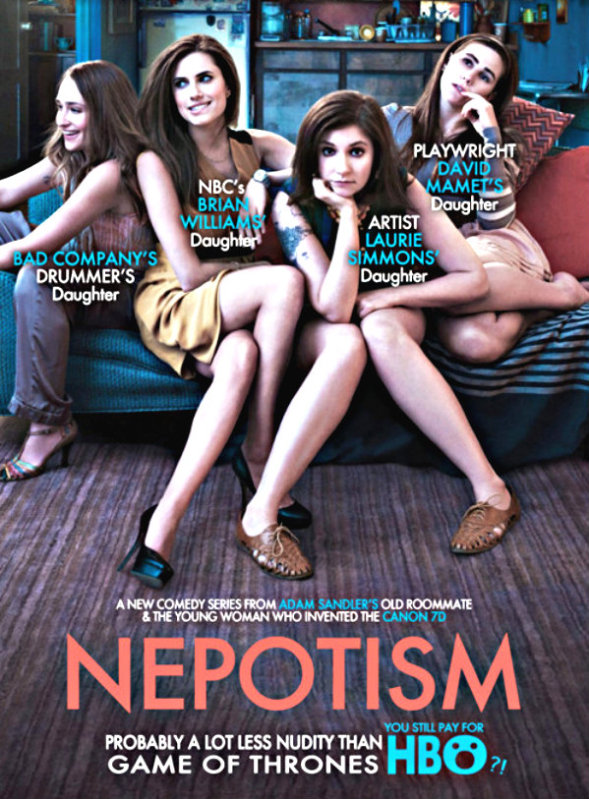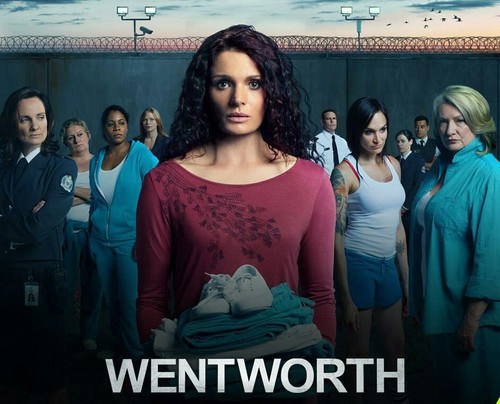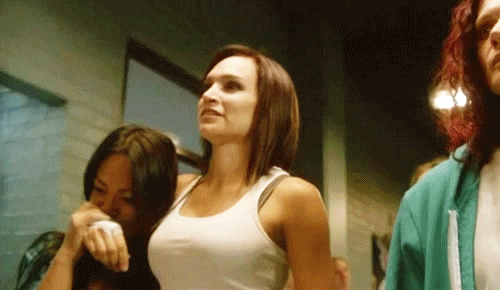Written by Rachel Redfern
*Spoiler Alert
[youtube_sc url=”http://youtu.be/wnU13ZHxjGk”]
There’s been some uproar, some talk, some criticism, and a lot of excitement about the return of Girls. Lena Dunham’s insanely successful show (which for a show about a unsuccessful 20-something girl, strangely leaves me feeling even more unsuccessful as a 20-something girl who doesn’t have my own HBO show), while receiving fairly universal acclaim, has also been the recipient of some harsh criticism: where is the show’s diversity? And why is Dunham always naked?
To be fair, both are valuable observations of the darkly comedic show; if you’re going to spend a lot of time naked on screen, what are the reasons? And, for a show about the millennial experience in New York City, why does the show only have white people?
First, for the commentators on the amount of nudity in Girls, I disagree; Dunham’s instances of sex (much like Masters of Sex) appear as way to further the character development, rather than give the audience “sexy times.” Jessa going down on another woman in the second episode, “Truth or Dare,” didn’t feel pandering or exploiting like most “girl on girl” sex scenes are; instead, if felt like an exposure of Jessa using sexuality, along with another person, in order to fulfill her own interest. Or as the Los Angeles Times said, “Dunham is forcing us to reconsider what bodies we value and why. It isn’t just nudity. It’s revolutionary.”
Second, there have been a lot of shows about white women in New York City, so yes, I think it’s time for change. Hopefully in the near future HBO and other prominent networks will expand into more varied character territory. Also, I think Dunham’s been fairly aware of the criticism leveled at the popular show and in her words, “We need to talk about diversifying the world of television. We are trying to continue to do it in ways that are genuine, natural, intelligent, but we heard all of that and really felt it deeply.” I feel it’s too Dunham’s credit as a writer that she “diversify” Girls in a way that flows naturally from the story.
More importantly though, Jessica Williams of The Daily Show glory will have a few spots in Girls season 3 (there’s no way this can turn out badly), and had some amazing thoughts on the situation: “It’s her art and it’s her voice. It’s not her responsibility to write from my experience.” I suggest you read it for yourself, since she says it so much better than I ever could.

There’s also been that nepotism controversy with Dunham, which could be true, but oh well. So Dunham made a TV show with her friends, does it make it any less well-done? Are the children of famous people destined to live a life away from ambition just because their parents were famous? No, (but to be fair, let’s be honest, the saying “it’s not what you know, it’s who you know” is a thing for a reason).
Now, on to the show.
Girls has a more sitcom feeling this year, moving past a lot of the darkness that characterized season two: Hannah’s OCD behavior, Marnie’s failure at everything, and Jessa’s inexplicable disappearance. Season three wraps all those issues up nicely and quickly picks the show up and runs along (though whether a good choice to keep the show moving, or losing key plot and character moments remains to be seen).
Surprisingly, Adam and Hannah’s relationship seems to have mellowed and Adam is by turns deeply disturbing and charming, though more charming than disturbing; which is good since I found his odd rape references in season one really problematic.
But the first few episodes raise some good questions for the audience: what seem to be the most prominent themes of season three? Jessa’s storyline seems to have been built up this year, which I hope for more of as Jessa’s bluntness is, hands down, one of the best things on the show.
As to Marnie, will she find her way out of the wilderness? I especially liked the quick scene of Marnie waiting for the bus in the ‘burbs, a quick moment to show us the alienation that she feels from the city and her former life.
Also, since when was Adam a love guru? Giving impossibly bad advice about making immediate connections with people and “Just knowing that they’re right for you” seems a little off, cause, you know, love at first sight and overwhelming feelings of immediate love were never a bad idea.
One thing to note this season though, is how Dunham has changed as a director. Three years of experience in directing with a first-rate network (HBO) have obviously enhanced the ways that she’s expressing scenes. Dunham and the Girls crew seem much more willing to invest in longer shots and monologue, interjected with quicker moments of character exposition, i.e.: Marnie waiting for the bus, Jessa on her older friend’s bed with a disarmingly sincere smile, Hannah curled up in the leaves listening to This American Life.

This season seem to be picking up quickly in the arena of gender commentary, most notably in the way that women interact with each other, and the way that women are seen as interacting with each other. Early on Adam voices his opinion on how women behave, saying, “Women get stuck in this vortex of guilt and jealousy with each other that keep them from seeing situations clearly.”
Also, Amy Schumer was there with a weird bit about pregnancy that was terrifying, awkward, hilarious, and probably everything you’ve ever wanted to say to an ex.
Unexpectedly, people seem to be over the Marnie storyline and are instead focusing on Shoshanna, a character viewed as sort of trivial, but who is growing up and into herself by exploring her sexuality after losing her virginity (raise your hand if you’ve been there), while also juggling school and remaining inordinately optimistic about her post-graduation options (oh my god, it’s me).
I can’t wait to see Shoshanna next season when she’s looking for a job.
But, hands down, the best line of the two-episode premier, proving that the show has a few laughs ahead, comes from the indomitable Hannah Horvath: “This rocking chair is so pointed it’s just not giving me any room to express myself.”
Yes Hannah, me too.
See also at Bitch Flicks: Let’s All Take a Deep Breath and Calm the Fuck Down About Lena Dunham, by Stephanie Rogers










